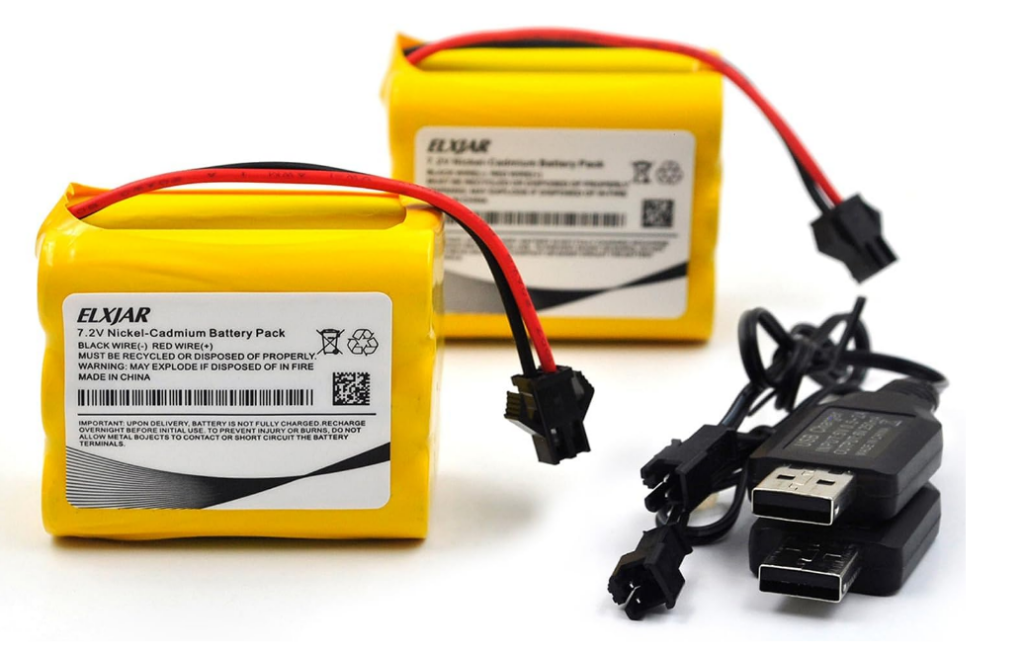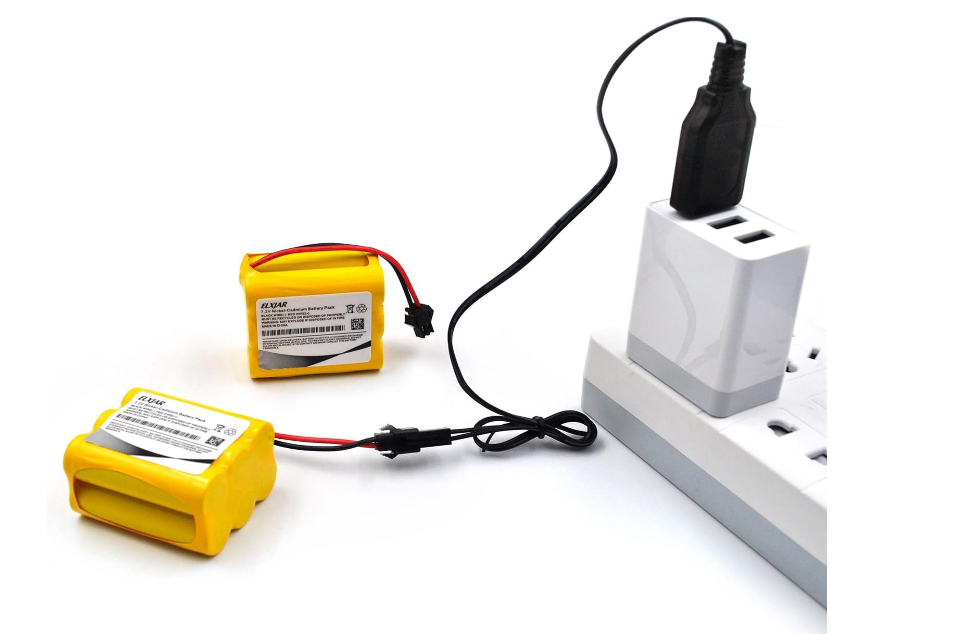Looking to charge your Ni-Cd battery? You’ve come to the right place! In this article, we’ll explore the best practices for efficiently charging your Ni-Cd battery. Whether you’re new to the world of battery charging or simply looking for ways to optimize your process, we’ve got you covered. From understanding the basics of Ni-Cd batteries to exploring the most effective charging techniques, we’ll provide you with everything you need to know. So, let’s dive in and learn how to charge Ni-Cd batteries effectively!

How to Charge Ni-Cd Battery: A Comprehensive Guide
Ni-Cd batteries, short for nickel-cadmium batteries, have been widely used for various applications for decades. These rechargeable batteries are known for their durability and ability to provide a consistent power supply. However, to ensure optimal performance and longevity, it is important to follow the correct charging protocols. In this comprehensive guide, we will explore the step-by-step process of charging Ni-Cd batteries, discuss the different charging methods, and provide valuable tips for maximizing their lifespan. So, let’s dive in and learn how to properly charge a Ni-Cd battery.
Understanding Ni-Cd Battery Charging Basics
Before we delve into the specifics of charging a Ni-Cd battery, it’s crucial to understand the basics. Ni-Cd batteries are composed of a nickel hydroxide positive electrode, a cadmium negative electrode, and an alkaline electrolyte. When the battery is discharged, the positive nickel hydroxide is converted into nickel oxyhydroxide, while the cadmium negative electrode is converted into cadmium hydroxide.
When charging a Ni-Cd battery, the process reverses: nickel oxyhydroxide is converted back into nickel hydroxide, and cadmium hydroxide is converted back into cadmium. It’s worth noting that Ni-Cd batteries have a memory effect, meaning they can develop a reduced capacity if they are not fully discharged regularly before recharging. By understanding these fundamental principles, we can ensure the charging process is optimized for the best performance.
Step-by-Step Guide to Charge a Ni-Cd Battery
Now that we have a basic understanding of Ni-Cd batteries, let’s explore the step-by-step process to charge them correctly:
- Step 1: Prepare the charger – Begin by selecting a charger specifically designed for Ni-Cd batteries. Avoid using chargers made for other battery chemistries, as they may not deliver the appropriate charging current and voltage.
- Step 2: Check the battery voltage – Before charging, ensure the battery voltage matches the charger’s voltage rating. Ni-Cd batteries typically have a nominal voltage of 1.2 volts per cell.
- Step 3: Connect the charger – Connect the charger’s positive terminal, usually marked with a “+” symbol, to the positive terminal of the battery. Similarly, connect the charger’s negative terminal, often marked with a “-” symbol, to the negative terminal of the battery.
- Step 4: Set the charging mode – Depending on the charger model, you may need to select the appropriate charging mode. Standard Ni-Cd chargers typically offer options such as fast charge, trickle charge, or pulse charge.
- Step 5: Start the charging process – Once everything is connected and the charging mode is set, start the charging process by activating the charger. Monitor the charging progress throughout the process.
- Step 6: Monitor the temperature – Ni-Cd batteries can generate heat during charging. It’s important to monitor the battery’s temperature and ensure it remains within a safe range. If the temperature exceeds the recommended limit, it is advised to stop the charging process.
- Step 7: End the charging – When the battery is fully charged, disconnect the charger from the battery. Avoid overcharging, as it can potentially shorten the battery’s lifespan.
Different Ni-Cd Battery Charging Methods
Ni-Cd batteries can be charged using various methods, each with its own advantages and specific use cases. Let’s explore the different charging methods for Ni-Cd batteries:

1. Fast Charging
Fast charging, as the name suggests, is a method that allows for quickly recharging the Ni-Cd battery. This method typically involves higher charging currents and shorter charging times. Fast charging is suitable when time is of the essence, such as in emergency situations or for devices with high power demands. However, it’s important to note that fast charging can generate more heat and, if not controlled properly, may lead to reduced battery life.
2. Trickle Charging
Trickle charging is a low-current charging method commonly used to maintain the battery’s charge level when not in use. It involves providing a small current to the battery continuously, compensating for self-discharge. Trickle charging is ideal for applications where the battery is stored for extended periods, such as emergency backup systems or remote devices. However, it’s essential to use a charger specifically designed for trickle charging, as excessive current can cause overcharging and damage the battery.
3. Pulse Charging
Pulse charging is a charging technique that alternates between high-current pulses and rest periods. This method helps minimize heat generation during charging and can extend the battery’s lifespan. Pulse chargers are designed to deliver short bursts of high current followed by a short resting period, allowing the battery to cool down. Pulse charging is suitable for applications where battery longevity is crucial, such as in medical devices or critical communication systems.

Tips for Maximizing Ni-Cd Battery Lifespan
To ensure the longevity and optimal performance of Ni-Cd batteries, here are some valuable tips to keep in mind:
- Avoid overcharging: Overcharging can cause heat buildup and reduce the battery’s lifespan. Always monitor the charging process and disconnect the charger when the battery is fully charged.
- Perform regular full discharges: Ni-Cd batteries are prone to memory effect. To prevent capacity loss, perform full discharges periodically before recharging.
- Store batteries properly: If you need to store Ni-Cd batteries, ensure they are stored in a cool, dry place. Avoid exposing them to extreme temperatures or high humidity.
- Avoid deep discharges: While Ni-Cd batteries benefit from periodic full discharges, deep discharges, where the battery voltage drops below 1 volt per cell, can cause irreversible damage.
- Do not mix batteries: When using multiple Ni-Cd batteries in a device, it’s recommended to use batteries of the same brand, capacity, and age. Mixing different batteries can lead to imbalance and reduced performance.
In conclusion, charging Ni-Cd batteries correctly is essential to maximize their lifespan and ensure optimal performance. By following the step-by-step guide and understanding the different charging methods, you can unleash the full potential of your Ni-Cd batteries and enjoy a reliable power supply for your devices. Remember to adhere to the recommended charging protocols and implement the tips provided to extend the lifespan of your Ni-Cd batteries. With proper care and maintenance, your Ni-Cd batteries will continue to serve you well for years to come.
Frequently Asked Questions
How do I charge a Ni-CD battery?
Charging a Ni-CD (Nickel-Cadmium) battery is a fairly straightforward process. Here are the steps to follow:
Can I use any charger to charge my Ni-CD battery?
No, it is important to use a charger specifically designed for Ni-CD batteries. Using the wrong charger can damage the battery and even pose safety risks.
How long does it take to charge a Ni-CD battery?
The charging time for a Ni-CD battery varies depending on its capacity and the charger’s output. Generally, it takes around 1-2 hours to fully charge a Ni-CD battery.
Should I discharge a Ni-CD battery before charging it?
Unlike some other battery types, Ni-CD batteries do not require complete discharge before recharging. In fact, frequent full discharges can even shorten their overall lifespan. It is best to recharge a Ni-CD battery as soon as its power level drops to avoid deep discharges.
Can I leave a Ni-CD battery on the charger after it is fully charged?
It is recommended to remove a Ni-CD battery from the charger once it is fully charged. Leaving it connected to the charger for an extended period can cause overcharging, which can degrade the battery’s performance over time.
How often should I charge my Ni-CD battery?
There isn’t a set frequency for charging Ni-CD batteries. It is advisable to charge them when the power level drops to a significant extent or as needed. Overcharging or undercharging the battery can affect its overall capacity and lifespan.
Final Thoughts
To charge a Ni-Cd battery effectively, follow these steps: First, ensure the battery is fully discharged before charging to avoid memory effect. Then, connect the battery to a Ni-Cd charger specifically designed for these batteries. Set the charger to the appropriate voltage and current settings according to the battery’s specifications. Next, plug the charger into a power source and allow the battery to charge completely. Finally, disconnect the battery from the charger once it is fully charged. Remember, proper charging techniques are crucial for maximizing the lifespan and performance of your Ni-Cd battery. Always refer to the manufacturer’s instructions for specific guidelines on charging your battery.

